Two of Philip's most provocative projects of the 1950s were never built. The William A. M. Burden House of 1955, more fully defined in drawings than the Walter Chrysler House of 1952, may stand for both of them. It consisted of three separate one-story cubic pavilions mounted on a high podium and sheltered by a hugh column-free steel and glass canopy-frame open on all four sides. The pavilions accommodated differing functions: the living-dining space; another, the family bedrooms; a third, a guest bedroom suite. Breuer's binuclear houses may have been an antecedent, but no Breueresque connections were used. There is, in fact, more evidence of the two architects Philip mentioned in is remarks about the Wiley House. The podium surely represented Mies, as did the great canopy, its roof supported on long trusses in emulation of Mies;s stupendous Convention Hall project of 1953-54, meant for Chicago. The pavilions themselves were further suggestive of Mies in their rectilineally abstract elevations, but as a group of separate units, they harked back to Emil Kaufmann's reading of Ledoux's "Autonomen-Architektur." Trees and sculpture pools would have shared the podium with the pavilions, the whole ensemble a massive study of parts within parts within a whole--Philip's tendency to compartmentalize convincingly united Mies's drive for simplicity. If completed, the Burden House would have been an unsurpassed fulfillment of its architect's dream to achieve monumentality in the modernist idiom.
--Franz Schulze, Philip Johnson: Life and Work (1994), pp214-16.
1997.02.08
segue to digital museum
Philip Johnson's estate in Connecticut... ...the New Canaan Johnson estate... ...an ideal setting and real museum of architecture (and art). ...segue to digital museum (Acropolis Q) as a virtual place/museum that is an experiment in architecture.
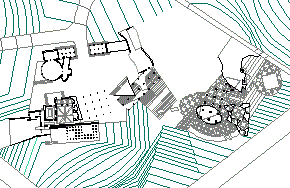
Acropolis Q
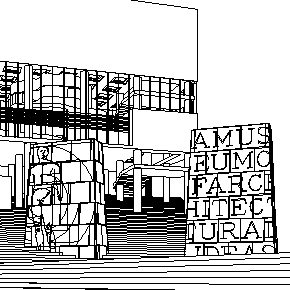
1991: A Museum of Architectural Ideas
| |
1999.07.27 11:34
interface, Truman Show, etc.
It is now confirmed that the main reason I occasionally write to you is because I then look forward to your response. Nonetheless, I found your response this time somewhat provocative, but mostly disturbing. The cautionary advise to not go crazy, the psychological advise, the worry about too much belief as a trap, the tone down the volume of ego--it took me a while to figure out where all that was coming from. Some I can connect and some I can't. For what it's worth, I take my work seriously as projects, however projects executed to the full extent of homo ludens, as human being (seriously) playing.
I'm trying to think of a simple way to explain my work in order to help you understand where I see myself coming from. What makes this difficult is that there can be no blanket statements to cover what I do because I've developed (through lots of practice) a versatility of dexterity that enables me to easily jump from one way of doing something to another way of doing something (else)--a kind of multi megabyte random access dexterity. I learned how to 'play' this way right after I first learned CAD, essentially I could begin playing because the computer supplemented my dexterity of hand and mind tremendously. So much of what I had to take seriously, like precision drafting, was now being done for me. This left a brand new (large) gap in the area of what things I could do myself. Rather than lament the computer taking away my skill, I consciously decided to celebrate my new freedom, and I did that first by going to the furthest extreme from precision, to the scribble, the slapdash, the accident. That was in the early 1980s, and I'm happy to say that my celebration (through art) then has generated a large and growing legacy as well as a (unique?) work ethic. For example, part of being good at being metabolic is knowing precisely where to break the rules (i.e., within the confines of the rules themselves)--legal loopholes are very metabolic.
I find it intriguing that within the context of my work you focus on belief. To me that means I am then well within the rather narrow territory where belief is indeed the central issue--there are not many people that inhabit that territory freely or easily, mostly because other people will go so far as to kill you if your beliefs are threatening to their beliefs. For some sad reason, beliefs often come with battles.
Of course, I believe in what I do and say/write, and in so doing I have seen many of my former beliefs abandoned. The world I see now is very different from the world I saw more or less the first 35 years of my life, and I'm glad for it. People often say that life is too short, but it is probably more true that most of us are here for what is actually a long time. I am now at the point of creating my life--Truman producing his own Truman Show? Or is Quondam my virtual "Glass House"?
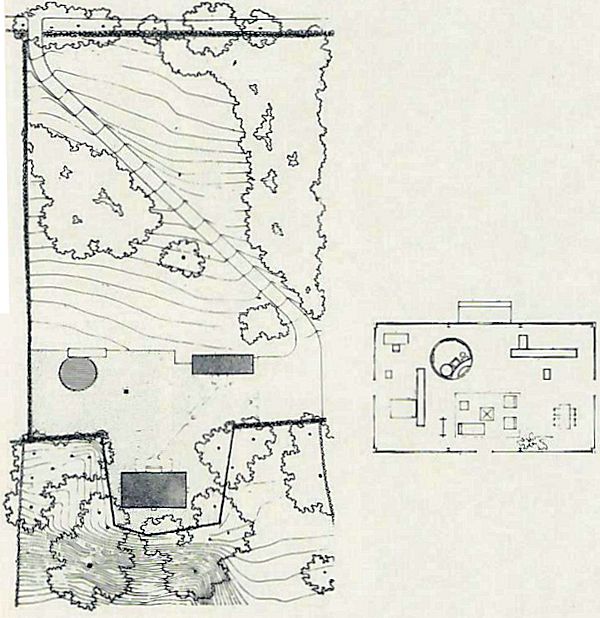
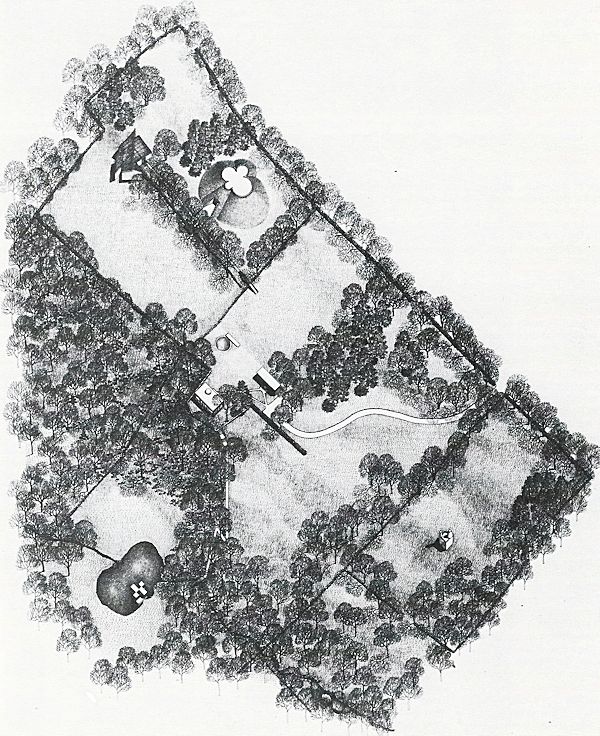
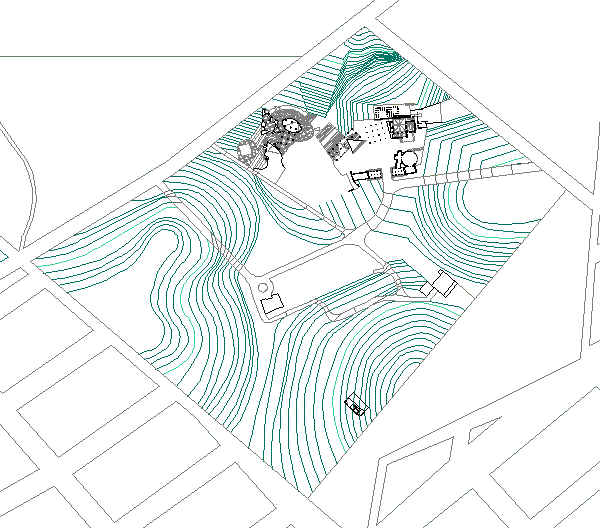
| |
2000.02.16 12:32
Re: reasons why not to worry
Rarely is any architect able to readily execute his or her designs and intentions immediately and/or of their own volition, and if such a favorable condition is at hand, then it is most likely because of independent wealth or being in a politically powerful position. The cyberspace of the Internet has made self-made, readily executed architecture possible. The closest comparison I can think of in our time and in the real world is Philip Johnson's estate in New Canaan, where each of the buildings there is of Johnson's own designs and for his own use, and where each building is a design experiment--essentially Johnson created an open air museum of Philip Johnson architecture, while at the same time 'practicing' and' researching' architecture.
Because of the www, any architect can now 'virtually' do the same thing; architects anywhere can now practice and research architecture in cyberspace. Unfortunately, it seems most architects are not even aware of this potential, and really not every architect has the physical means to engage and design within cyberspace. As in the real architecture world, it is not enough to theorize and write about architecture in cyberspace, one should also build in cyberspace to realize the full potential.
2001.08.12
more reenactionary
3. Acropolis Q reenacting New Canaan - ...it will certainly deal with architectural experimentation (within one's own domain) and with the issue of a modern museum of architecture. Quondam, which was very much a 'Glass House' during schizophrenia + architectures...
2001.08.21 14:47
persistence
But I don't want to lose sight of www.quondam.com as strictly architecture, and here I evoke Philip Johnson's compound at New Caanan--which is perhaps the best personal virtual museum of architecture in the real world prior to Quondam. Yes, I've been unwittingly reenacting Johnson, with www.quondam.com as my 'Glass House', and more recently with www.museumpeace.com as my neighboring art gallery.
It seems axiomatic that reenactment has a lot to do with persistence, and, when you think ahead to human cloning, persistence has a whole lot to do with reenactment.
2005.07.07 15:23
Krautheimer and Johnson
[2005.06.11: And don't forget "Creating One's Own Virtual Museum of Architecture" will be presented by Richard Krautheimer and Philip Johnson on 7 July 2005 within the enormous subterranean arched vaults of the Philadelphia Museum of Art. ]
Yes, calendrical coincidence was all the buzz again. As was last weekend's London/Philadelphia bilocation reenactment. And now subterranean arched vaults...from the tube to front row seats.
Krautheimer is still just in awe of Tertullian's and Piranesi's "De Spectaculis II" delivered 14 May 2005. It just never occurred to him before that the Mausoleum of Romulus/Circus of Maxentius complex (which reenacts the almost two hundred years earlier Mausoleum of Hadrian/Circus of Hadrian complex) became the paradigm, albeit inverted, for all the Roman Christian "church" architecture immediately after the Basilica Constantiniani (St. John Lateran) and the Basilica San Pietro Vaticano. That aerial shot of the Mausoleum of Constantina (Santa Costanza) adjacent the circus-like dining hall first "basilica" of St. Agnes made it all so clear. If only the circus-like dining hall first "basilica" of Sts. Pietro and Marcellinus adjacent the Mausoleum of Helena were still to be seen from the air. How clever of Eutropia and Helena to invert the pagan 'munus' architecture into Christian 'munus' architecture, and how very clever of Piranesi to secretly hide all this architectural history information within the ever quaestio abstrusa Ichnographia Campi Martii. Krautheimer freely admitted he wants to "redux" his "virtual museum of architecture," the Corpus Basilicum Christianum Romae.
Alas, Johnson is still in surprise shock since late January, i.e., he's for the most part speechless, which is a welcome change, even for himself. He never imagined such a thing as the Horace Trumbauer Architecture Fan Club that he is now a part of it, albeit he now has so, so much to really learn. Funny though, he's still "dying" to know what other architects will be joining the club. Whenever he names one of his quondam architecture "friends," the rest of the club just shake their heads "No" and say, "You still shouldn't throw stones."
Krautheimer's 108th birthday party yesterday was ever so intellectually stimulating, and Johnson's 99th birthday party tomorrow is being based on the theme of stupefaction. Apparently, Eutropia and Helena still like to invert things, and rumor has it that Maxentius and Constantine might even provide some entertainment with a "song and dance."
2007.07.08 12:52
8 July
1906 birth of Philip Johnson
2003 death of Ladan and Laleh Bijani
"Thus, each project of Le Corbusier's is ideologically charged while each of Johnson's seems an attack on the very idea of ideology, an essay in style."
Robert Stern, "The Evolution of Philip Johnson's Glass House, 1947-1948" in Oppositions /10.
Maybe the twin couples are going to publish a new journal on architecture entitled Appositions.
Were ideology and style once Siamese twins?
|




